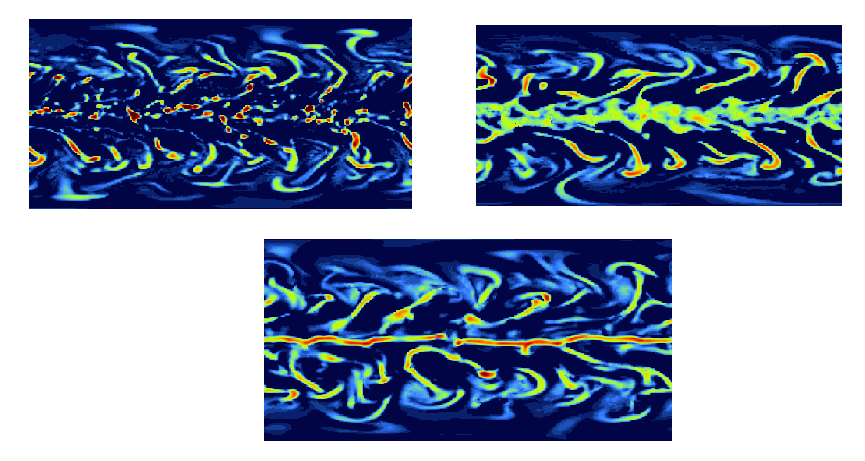Idealized moist global atmospheric models

Snapshots of precipitation over the globe in three versions of an idealized moist climate model
Over a number of years, we have used idealized dry models of the general circulation of the atmosphere to study various aspects of the maintenance of the atmospheric climate. See Chen, Held, and Robinson for a recent example. But to address many of the most interesting questions in atmospheric dynamics, the model must represent the hydrological cycle of evaporation and precipitation, as well as the profound effects of latent heat release. it is a challenge to incorporate effects of water vapor and condensation in a model while retaining enough simplicity (and even elegance) that the community of researchers studying he theory of the general circulation of atmosphere would naturally focus their attention on understanding this particular system — rather than inefficiently dissipating their energies on too large a set of models. With this motivation, Dargan Frierson, working at the time as a graduate student with Isaac Held and Pablo Zurita-Gator, designed a prototype moist model of this type. The first of several papers on this model can be seen here. The model has a homogeneous surface and, therefore, a zonally symmetric climate. it has no clouds — in fact, the water vapor in the model has no interaction with the radiation field. By manipulating this kind of model, one can generate the three precipitation patterns illustrated above. The different qualitative characteristics of the Intertropical Convergence Zone in these images is striking. A goal of this sort of modeling is to gain a better understanding of how tropical convection is organized by constructing models in which convection is organized very differently.


